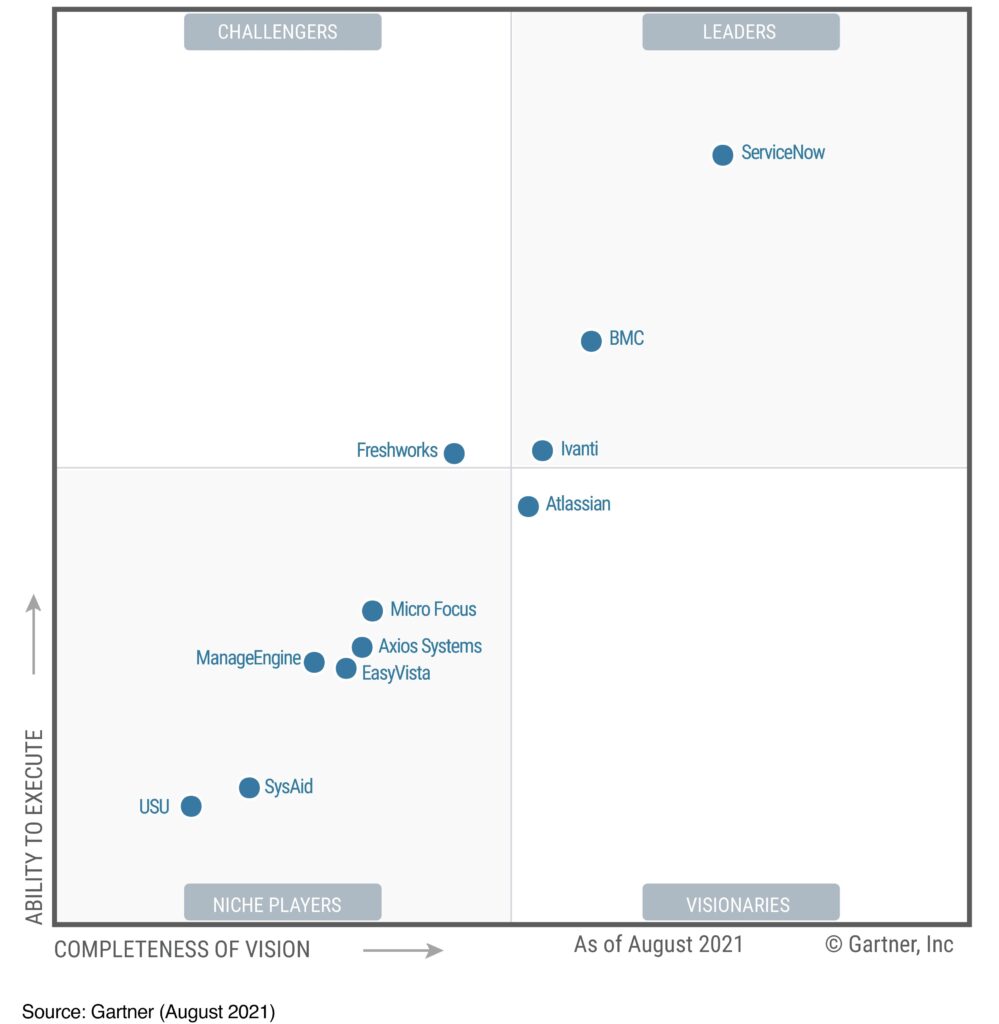Enabling the World of Digital Work: ServiceNow

ServiceNow succeeded in Covid-19 by helping other companies digitize their workflows.
The impact of Covid-19 on companies’ internal operations and workflows has been undeniable. The pandemic forced many companies to accelerate their digitization of both internal operations and customer interactions by several years (Source: McKinsey). Adapting to remote working models became a necessity for nearly all enterprises – in a matter of months, companies were forced to work effectively in distributed environments. Employees could no longer walk down the hall to ask for help or collaborate in person. IT departments, for example, could no longer support employees with in-person help. Workflows shifted in nature from offline, local, and in-person to online, distributed, and digitized. Many companies were caught off-guard, and to a certain extent, all companies were forced to become technology companies.
As the established leader in helping customers adapt to a digital-first world, ServiceNow (NYSE:NOW) meaningfully capitalized on and benefited from the accelerating digital-work trends described above. ServiceNow is a leading provider of cloud-based software that helps companies structure, manage, and automate their organization’s work (Source: ServiceNow).
ServiceNow began its journey by providing a suite of IT-related applications that allows IT departments to automate and standardize their workflows. The Company built a market-leading IT Service Management (ITSM) solution, as demonstrated by the figure below, a position which it has held for the past eight years (Source: ServiceNow). Over time, ServiceNow has expanded its platform offerings, under its ultimate vision of enabling everyone to route work simply across the enterprise. The Company’s offerings now include employee workflows (e.g., HR services, legal services), customer workflows (e.g., customer service management), and creator workflows (e.g., low-code application engines for creators).
The Company’s software is critical to helping companies operate in ways that are now imperative for their survival – transitioning offline, slow, and manual workflows to remote, digitized, and efficient ones. ServiceNow was the market leader in its category heading into the pandemic, and it remained the “go-to” platform as customers realized their needs for these services. While many companies scaled back operating expenses to survive in the pandemic, digital workflow software couldn’t be sacrificed (in fact, it required even more investment).
A key component of ServiceNow’s success is its ability to integrate, rather than compete with, the long-time, core software tools and platforms that are critical to the enterprise. The Company’s model is effectively a “platform of platforms” – integrating the existing tools of the enterprise (e.g., Adobe, Salesforce, SAP) into a single cloud-based platform (the Now platform), with a common data model and a single architecture as its foundation (Source: ServiceNow). Though ServiceNow began as an IT Service Management provider, it expanded to nearly all other elements of a company’s operations, further expanding its value proposition and value creation for its enterprise customers. The Company has built the digital, connective tissue that can span every workflow of an organization, helping companies operate efficiently in a distributed, digital environment.
The Company’s layering “value creation” model has translated to its “value capture” model as well. ServiceNow leverages a “land and expand” approach with its customers. While initially hired for its core IT Service Management suite, customers typically expand their usage of the platform to other workflows (employee, customer, and creator workflows), as they continue to realize value in moving more of their work to digital formats. And because this expansion strategy further embeds the Now platform within its customers’ operations, net churn among customers is negative – declining even further through the pandemic, as highlighted by the growth in ServiceNow’s customer cohorts below.
As the pandemic fades, hybrid and remote work are here to stay. In fact, in a recent Gartner survey of HR managers, nearly 50% reported that they will let employees work remotely on certain days and nearly 33% will let employees work remotely all the time (Source: Gartner). ServiceNow’s platform is enabling this transition and allowing corporations to maintain productivity in a fluid, distributed environment. This transformation to digital operations is boosting its customers’ resiliency, security, and efficiency in the new age.






Very interesting. Would love to see even more of how they’ve differentiated themselves from their competitors. The Gartner chart showed them in full white space, but if we picked different dimensions would they not look as special?
Really interesting company to profile, Alex. It’s certainly not hard to see why ServiceNow’s services were in demand during the pandemic, but I wonder if you have thoughts about what set them apart during this period. What was their competitive edge over BMC or Freshworks?